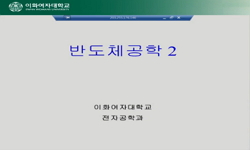Mobile pulse scanning Light Detection And Ranging (LIDAR) are essential components of intelligent vehicles capable of autonomous travel. Obstacle detection functions of autonomous vehicles require very low failure rates. With the increasing number of ...
http://chineseinput.net/에서 pinyin(병음)방식으로 중국어를 변환할 수 있습니다.
변환된 중국어를 복사하여 사용하시면 됩니다.
- 中文 을 입력하시려면 zhongwen을 입력하시고 space를누르시면됩니다.
- 北京 을 입력하시려면 beijing을 입력하시고 space를 누르시면 됩니다.
https://www.riss.kr/link?id=A103059981
- 저자
- 발행기관
- 학술지명
- 권호사항
-
발행연도
2017
-
작성언어
English
- 주제어
-
등재정보
KCI등재
-
자료형태
학술저널
-
수록면
43-62(20쪽)
- 제공처
-
0
상세조회 -
0
다운로드
부가정보
다국어 초록 (Multilingual Abstract)
Mobile pulse scanning Light Detection And Ranging (LIDAR) are essential components of intelligent vehicles capable of autonomous travel. Obstacle detection functions of autonomous vehicles require very low failure rates. With the increasing number of autonomous vehicles equipped with scanning LIDARs to detect and avoid obstacles and navigate safely through the environment, the probability of mutual interference becomes an important issue. The reception of foreign laser pulses can lead to problems such as ghost targets or a reduced signal-to-noise ratio. This paper will show the probability that any two scanning LIDARs will interfere mutually by considering spatial and temporal overlaps. We have conducted four experiments to investigate the occurrence of the mutual interference between scanning LIDARs. These four experimental results introduced the effects of mutual interference and indicated that the interference has spatial and temporal locality. It is hard to ignore consecutive mutual interference on the same line or the same angle because it is possible the real object not noise or error. It may make serious faults because the obstacle detection functions of autonomous vehicle rely on heavily the scanning LIDAR.
동일학술지(권/호) 다른 논문
-
GF(2m) 상의 여분 표현을 이용한 낮은 지연시간의 몽고메리 AB2 곱셈기
- 대한임베디드공학회
- 김태완
- 2017
- KCI등재
-
Wi-Fi RSSI 신호와 지자기 센서를 이용한 실내 위치 추정
- 대한임베디드공학회
- 김시훈
- 2017
- KCI등재
-
복잡한 목표물의 Glint와 RCS 모델링 및 시뮬레이션
- 대한임베디드공학회
- 송승언
- 2017
- KCI등재
-
- 대한임베디드공학회
- 진용식
- 2017
- KCI등재






 ScienceON
ScienceON






